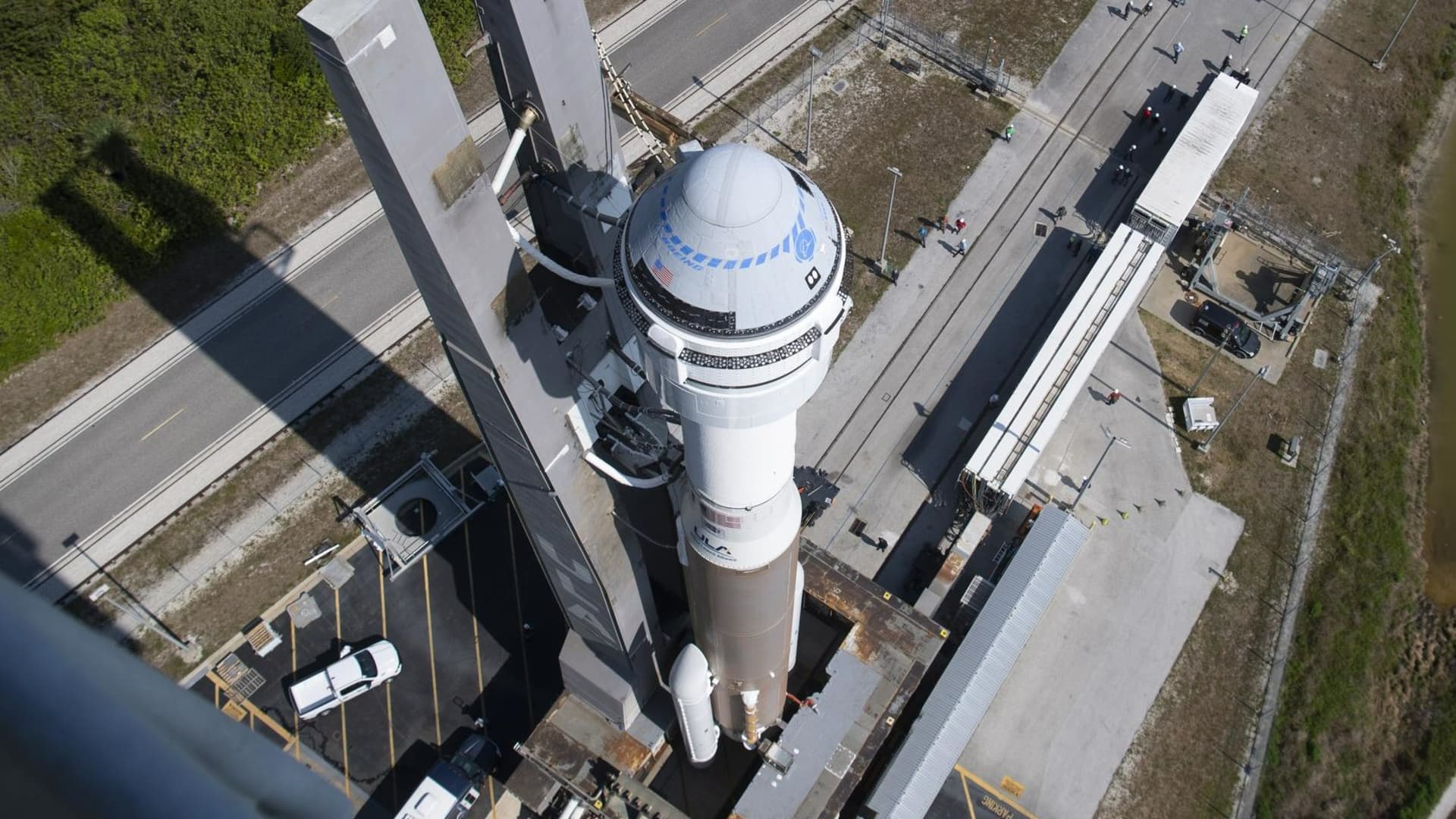
A United Launch Alliance Atlas V rocket with Boeing’s Starliner spacecraft aboard is seen as it is rolled out to the launchpad for the OFT-2 mission scheduled to lift off on May 19, 2022.
Joel Kowsky | NASA
Boeing is set to make another attempt to reach the International Space Station with its Starliner capsule Thursday, nearly 2 1/2 years after the company’s first mission fell short.
Boeing has been developing its Starliner spacecraft under NASA’s Commercial Crew program, having won nearly $5 billion in contracts to build the capsule. The company competes under the program against Elon Musk’s SpaceX, which completed development of its Crew Dragon spacecraft and is now on its fourth operational human spaceflight for NASA.
Boeing’s development of Starliner has run into several obstacles over the past three years.
Its first uncrewed mission in December 2019, called the Orbital Flight Test (OFT), ended prematurely after a software malfunction saw the capsule end up in the wrong orbit. NASA noted earlier this year, after an investigation into the issue, that Boeing’s software development “was an area where we may have not had quite as much insight and oversight as we should have had.”
Boeing attempted to launch the second orbital flight test, or OFT-2, in August, but the company discovered a propulsion valve problem while the spacecraft was still on the ground. Thirteen of the 24 oxidizer valves that control Starliner’s movement in space got stuck after launch-site humidity caused corrosion, and the spacecraft’s service module was replaced.
Boeing has now applied a sealant to the valves and is scheduled to make another attempt at launching OFT-2 on Thursday at 6:54 p.m. ET.
An Atlas V rocket from United Launch Alliance will carry Starliner to orbit, when it will begin a 24-hour trip before docking with the ISS. The mission is expected to last a few days in total before the capsule returns to Earth.
The U.S. Space Force’s 45th Weather Squadron forecast conditions to be likely clear for launch, with the potential for disruption from scattered thunderstorms around Florida’s Cape Canaveral. A back-up launch time is scheduled for Friday, but the weather is forecast to worsen on that day.
Boeing’s crucial test
The crew access arm of Launch Complex-41 swings into position for Boeing’s Starliner spacecraft ahead of the launch of the OFT-2 mission, scheduled for May 19, 2022.
Joel Kowsky | NASA
The aerospace giant was once seen as evenly matched with SpaceX in the race to launch NASA astronauts. Yet the delays to Starliner’s development have steadily set Boeing back, both in schedule and finances.
Due to the fixed-price nature of its NASA contract, Boeing absorbed the cost of additional work on the capsule, with $595 million spent by the company so far.
NASA last year took the rare move of reassigning astronauts from Starliner to SpaceX’s Crew Dragon. The space agency also last year announced it intends to purchase three more crewed flights from SpaceX, which would put Musk’s company on track to potentially finish its original NASA contract of six flights before Starliner carries its first one.
If Thursday’s OFT-2 launch is successful, Boeing would then prepare for a crewed flight test that would see the first astronauts fly on Starliner.
Boeing vice president Mark Nappi said in a prelaunch press conference that the company “could potentially be ready” for the crewed flight “by the end of this year.” Still, the company is examining whether to redesign the Aerojet Rocketdyne-made valves on Starliner, which could further delay it.
NASA’s Commercial Crew manager Steve Stich said the agency doesn’t see a redesign of the Starliner valves as a “big deal from a certification perspective.” NASA would work with Boeing to “figure out what kind of testing needs to occur” in the event of a redesign, Stich noted, with a schedule yet undefined for “how long it would take.”
“Personally, I would love to see Starliner flying past 2030. I would love to see Dragon flying past 2030. NASA made a huge investment in both those vehicles and they’re great platforms to go to low Earth orbit,” Stich said.







